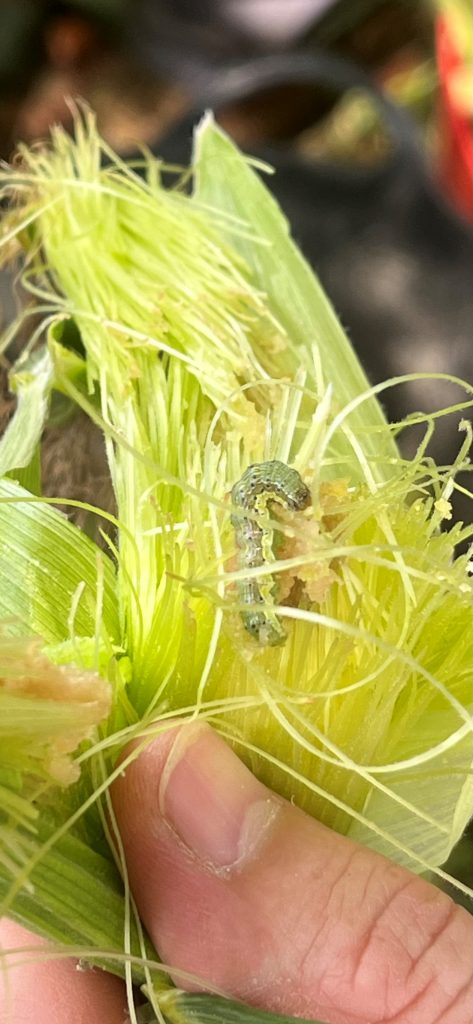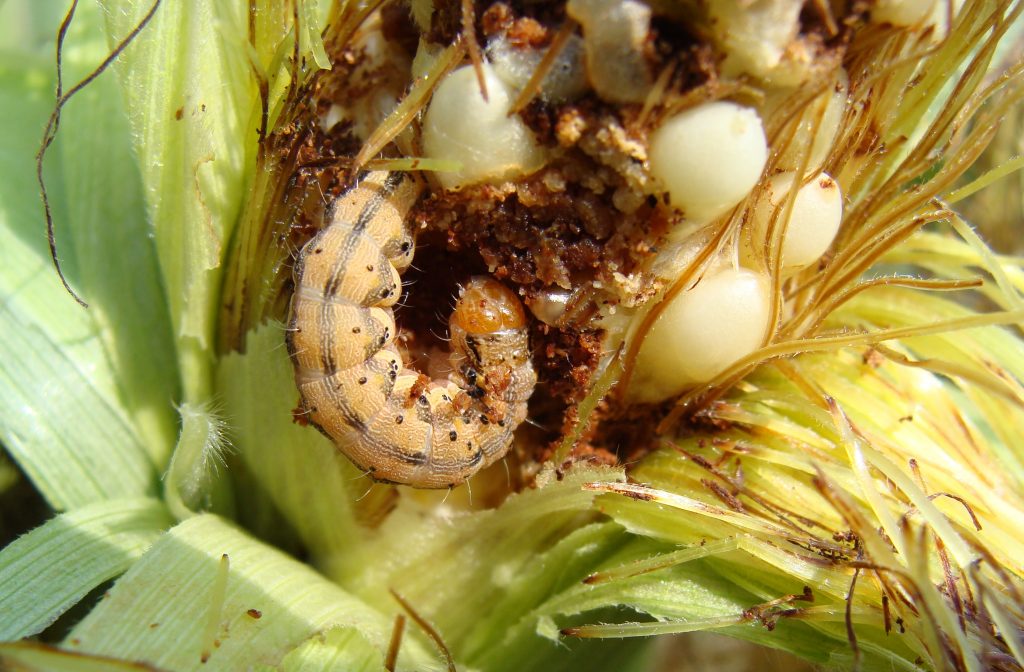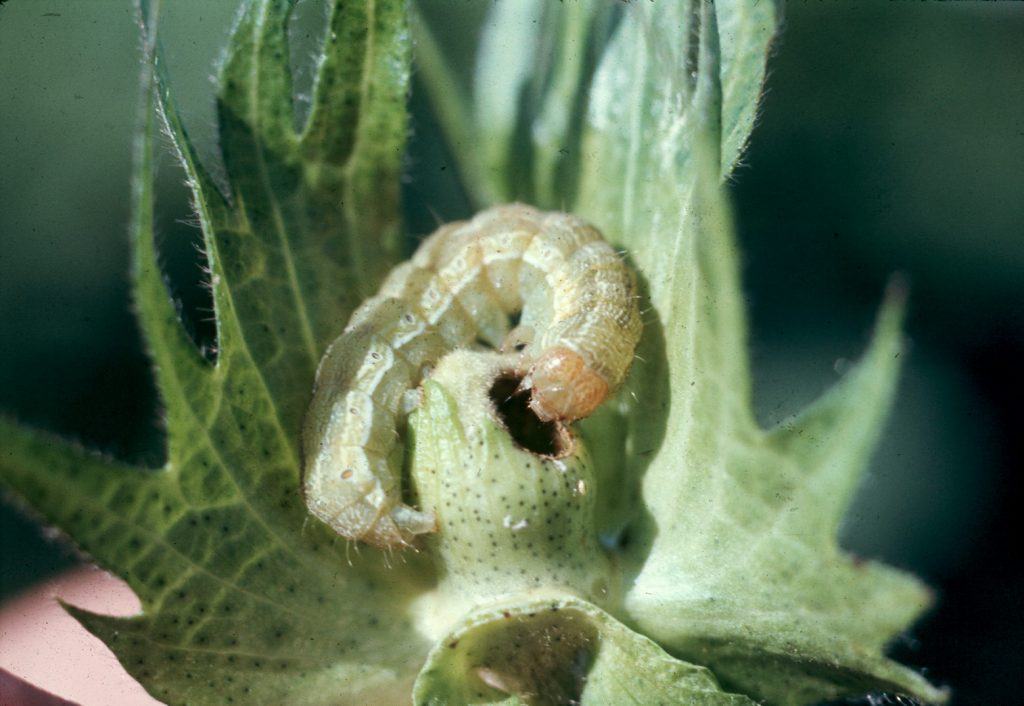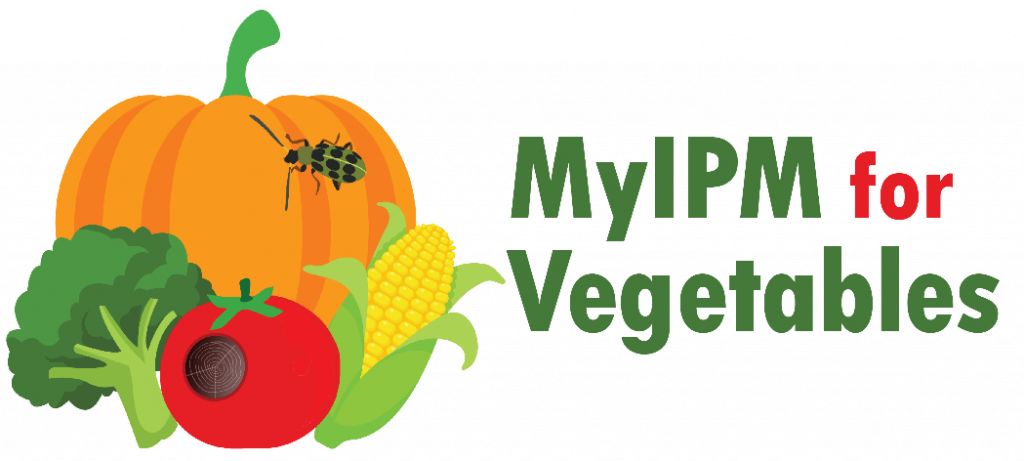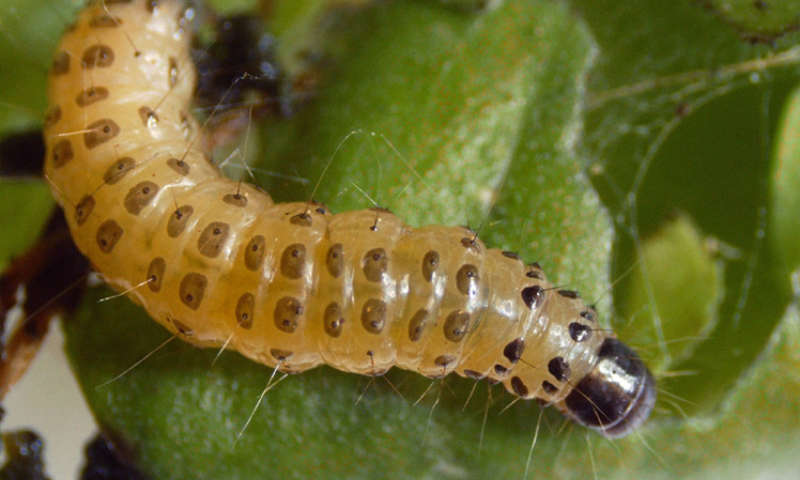By: Tom Kuhar, Alejandro Del Pozo, and Katlyn Catron.
Summer storms moving up from the South often bring pests with them. Fall armyworm (FAW) is definitely one of them, and true to form, this tropical moth pest has shown up around Virginia, causing problems in various crops as well as turfgrass. We noticed FAW attacking whorl-stage sweet corn in Blacksburg three weeks ago, and recently have heard reports of problems in Richmond and Appomattox. Other colleagues have documented the presence of FAW in Williamsburg and the Hampton Roads. Fall armyworm is a tropical moth native to warm climate areas of the western hemisphere. It cannot successfully overwinter in Virginia, but frequently makes its way to our state by flying at high altitudes where populations get carried northward on wind fronts. Turfgrass, pasture grass, late planted sweet corn and sorghum, and fall small grains plantings can be particularly at risk to damage from this pest.


Crops at risk. This pest seems to have a very wide host range, with over 80 plants recorded, but clearly prefers grasses. In addition, field crops also can be attacked, including alfalfa, barley, Bermudagrass, buckwheat, cotton, clover, corn, oat, millet, peanut, rice, ryegrass, sorghum, soybean, sugarcane, timothy, tobacco, and wheat. When the larvae are very numerous, they defoliate the preferred plants, acquire an “armyworm” habit and disperse in large numbers, consuming nearly all vegetation in their path. Just like a battle front, FAW damage appears in a characteristic progressive line across grass plantings (Fig. 1).
Monitoring. Because of the unpredictability of pest pressure from year to year and throughout the season, the use of pheromone traps to monitor local presence and build-up of FAW levels of these moth pests is strongly recommended. Pheromones are natural compounds that are emitted by female FAW moths to attract male moths (Fig. 2) for mating. Synthetic compounds that mimic natural FAW pheromones, often referred to as lures, are placed in traps to attract and trap male moths to inform farmers if FAW is present in their fields and if there is a need for increased scouting. Funnel or bucket (unitrap, universal trap [see Fig. 3]) is the preferred trap for FAW moths. We are monitoring FAW in different locations around Virginia and have caught moths at all locations (Fig. 4).



In-field scouting for turfgrass. If you are unsured that you might have an active FAW infestation, you could use the soap flush method, to drench a designated area and disturb the caterpillars that are present. Below are suggested steps to conduct a step-by-step soap flush drench.
What do I need to scout for FAW?
– 03 gallons of water per lawn
– Liquid dish soap (our suggestion is to use a lemon-scent soap)
– Measuring utensils
How do I start?
– Mix 3 tablespoons of the dish soap in one gallon of water
– Then pour one gallon of the soap solution over 2 squared-foot area of the lawn
What is next?
– Spend at least 5 minutes observing the areas of the lawn where you pour the soap water
– Be patient, it takes some time for these caterpillars to move up from the thatch, since the dish is an irritant for them
– There will be several insects and other arthropods crawling out from this area
– Remember to look for caterpillars with the “Y” suture on the front of their heads to confirm the presence of fall armyworms
– Repeat this drench technique in a total of three different spots in one lawn
Control. Most fall armyworms that established in Virginia will die naturally from diseases, parasitoids, and predation, and virtually none will make it through the winter., Nonetheless, masses of larvae can cause significant feeding damage to turfgrass in just a day or two, and thus quick mitigation is sometimes needed to stop their attack. This invariably involves insecticide applications. A wide range of products are available for control of FAW, but resistance to certain insecticides has been reported in some populations and control of large larvae is sometimes difficult with any insecticide. Pyrethroids appear to still be working well on FAW as well as most of the newer lepidopteran-targeting insecticides like diamides (i.e., Acelpryn in turfgrass, Coragen and Vantacor in agricultural crops) and spinosyns (Radiant, Entrust, Blackhawk in ag crops, Matchpoint in turfgrass etc.).

